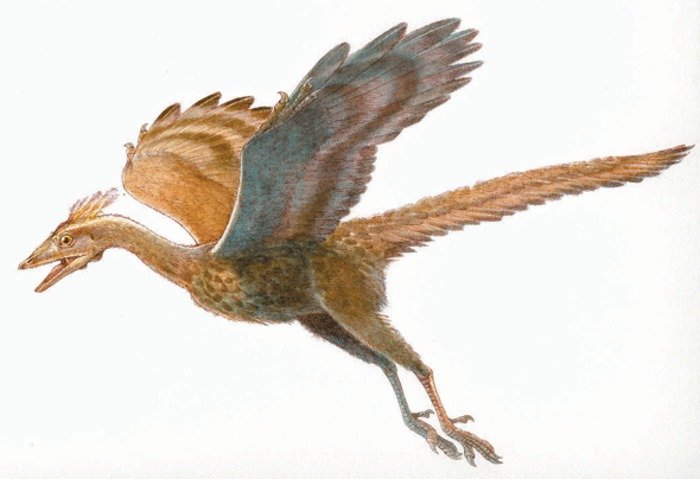Archaeopteryx
BRISTOL, England, Feb. 24 (UPI) -- The key characteristics of birds that allow them to fly, their wings and their small size, evolved much earlier than previously thought, British scientists say.
That's the finding of research by the universities of Bristol and Sheffield into the Paraves -- the first birds and their closest dinosaurian relatives -- that lived 160 million to 120 million years ago.
Earlier meat-eating dinosaurs had to shrink in size and grow much longer arms to support their feathered wings before they could fly, the researchers said.
"We were really surprised to discover that the key size shifts happened at the same time, at the origin of Paraves," Mark Puttick of Bristol's School of Earth Sciences said. "This was at least 20 million years before the first bird, the famous Archaeopteryx, and it shows that flight in birds arose through several evolutionary steps."
Those steps created a whole group of dozens of little dinosaurs that were lightweight and had wings of some sort, the researchers said.
Most were gliders or parachutists, spreading their feathered wings, but not flapping them -- that was a later evolutionary step, they said.
"Up to now you could only have guessed roughly where the major evolutionary transitions occurred," Sheffield's Gavin Thomas said, "but the new [study] methods pinpoint the size changes. The small size of birds and their long wings originated long before birds themselves did."
"The origin of birds used to be seen as a rapid transition," Puttick said, "but now we know that the key characteristics we associate with them arose much earlier."















